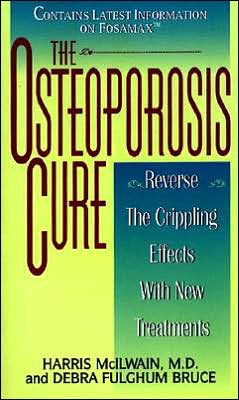The Osteoporosis Cure: Reverse the Crippling Effects With New Treatments
Once considered a progressive, incurable disease, osteoporosis can be prevented and/or treated in both early and later stages thanks to recent breakthroughs and medical developments. Now a medical doctor tells you what you can do to head off the crippling effects of this disabling illness.Find Out:
"1111741788"
- What are the symptoms of osteoporosis?
- What are the factors that put you at risk?
- Which common medications can increase your risk?
- Should you take estrogen for the prevention of osteoporosis?
- How is osteoporosis diagnosed?
- Who should get a bone-density test and what does it involve?
- What new bone-restoring drug has recently become available?
- What part do diet and exercise play in the prevention and cure of osteoporosis?
- What steps can you take to keep your bones strong and healthy
- Nutritional bonebuilders to add to your diet
- Simple bone strengthening exercises
- And Much More!
The Osteoporosis Cure: Reverse the Crippling Effects With New Treatments
Once considered a progressive, incurable disease, osteoporosis can be prevented and/or treated in both early and later stages thanks to recent breakthroughs and medical developments. Now a medical doctor tells you what you can do to head off the crippling effects of this disabling illness.Find Out:
- What are the symptoms of osteoporosis?
- What are the factors that put you at risk?
- Which common medications can increase your risk?
- Should you take estrogen for the prevention of osteoporosis?
- How is osteoporosis diagnosed?
- Who should get a bone-density test and what does it involve?
- What new bone-restoring drug has recently become available?
- What part do diet and exercise play in the prevention and cure of osteoporosis?
- What steps can you take to keep your bones strong and healthy
- Nutritional bonebuilders to add to your diet
- Simple bone strengthening exercises
- And Much More!
5.99
In Stock
5
1

The Osteoporosis Cure: Reverse the Crippling Effects With New Treatments
208
The Osteoporosis Cure: Reverse the Crippling Effects With New Treatments
208Paperback(Mass Market Paperback)
$5.99
5.99
In Stock

Product Details
| ISBN-13: | 9780380793365 |
|---|---|
| Publisher: | HarperCollins |
| Publication date: | 05/01/1998 |
| Pages: | 208 |
| Product dimensions: | 4.19(w) x 6.75(h) x 0.52(d) |
From the B&N Reads Blog
